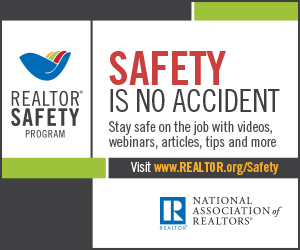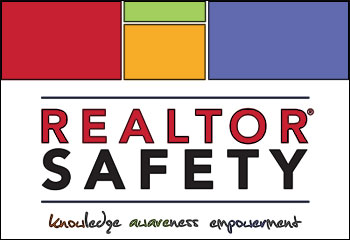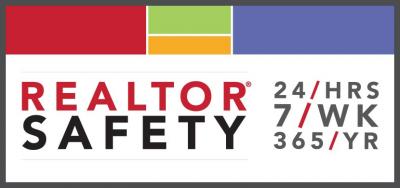
You get a call that a prospective buyer is behaving suspiciously during a property showing. Do you send out a safety alert? You hear of a toxic spill near properties listed in the MLS. Should you alert the listing brokers?
Many associations and brokerages have become early warning systems for safety issues, alerting their members or agents to anything from suspicious characters posing as homebuyers to con artists burglarizing homes during showings to hazards potentially affecting properties. Yet there's a legal risk to trying to do the right thing.
Over the years, NAR Legal Affairs has received calls from associations and brokerages that have been threatened with lawsuits, and others that have gone through litigation because of safety warnings they issued. A poorly worded warning can expose the issuer of the warning to claims ranging from defamation of character to interference with a sale to violations of the Fair Housing Act.
So how do you protect yourself from liability?
Create a policy
Create a clear written policy for issuing warnings and notices. The policy should detail the circumstances under which a warning should be issued, specify the required content and tone of the warning, and outline the process for issuing the warning.
In addition, the policy should address any restrictions on the scope of the warning. For instance, will it limit warnings to purely MLS and association-related issues or cover broader community issues. Policy drafters should keep in mind that the broader the policy, the greater the potential for litigation.
Proper warning format
The next step is to create a warning template. The warning should be neutral in tone (never judgmental) and should never offer specific legal advice. The warning should be based entirely on facts and cite outside resources where individuals can learn more about the issue (such as the local police website or the local newspaper). Always have an attorney review any warning statement before it is published.
A safety alert policy can be simple. For example, it could require that an alert direct individuals to contact the police directly with all complaints about individuals acting suspiciously. Only if and when the police open a file on the complaint will a warning be issued. The warning will contain basic information about the complaint, and include the investigating detective's phone number. The policy can also require attorney review prior to the alert’s publication.
Issuing a warning
Below are four potential warning scenarios and an analysis of the issues raised by each.
Suspicious behavior
Three members report having a "bad feeling" about an individual who's interested in visiting only high-end properties.
How should you provide a warning? Contact the police first. If authorities open a case, you can then publish an alert with factual information about the police investigation. Provide the individual's name only if the police report also lists the name. A description may be given but should be drawn directly from a police source if possible. Finally, the alert should direct all further inquiries to the police.
Con artist on the loose
You receive a call from an Association Executive alerting you to a scam artist who may be directly targeting your members or your agents.
Do you issue a warning to be careful when doing business with the individual?
First, ask the AE the source of the information and determine whether a complaint has been filed with the police in the AE's jurisdiction. If a complaint has been filed, you could provide a notice about that complaint and include the contact information of the investigating detective. If no complaint has been filed, you would be wise to obtain some type of evidence of the scam before issuing an alert, such as court records (but not pending lawsuits), local police reports, or newspaper reports. The bottom line here is that you should proceed with caution when considering issuing an alert based on the limited information of a few individuals. Doing so could open you and your business to litigation.
Hazardous waste spill
The local paper reports a large toxic spill near properties for sale. How can you issue a warning about the toxic spill and the possible dangers it may pose to properties in the area?
Think of the notice as an educational tool. It should be drafted carefully, containing only factual information from cited outside sources so that readers can direct their clients' inquiries to a third-party source.
Deadbeat tenant
A real estate professional who had an unpleasant experience with a former tenant wants to warn fellow members about the individual.
Should you provide such a warning?
This type of warning is risky, since your source may not be unbiased. Work closely with your attorney before making such a warning.
If the real estate professional has obtained a judgment against the former tenant, you could issue a warning based on those facts. However, you should not disclose whether the former tenant has filed for bankruptcy, as there are penalties related to stigmatizing a debtor.
Ultimately, issuing notices and warnings can be a valuable service, and can increase the safety of real estate professionals and the community. Follow the tips above to minimize your exposure while keeping your members and agents safe and profitable.













Comments